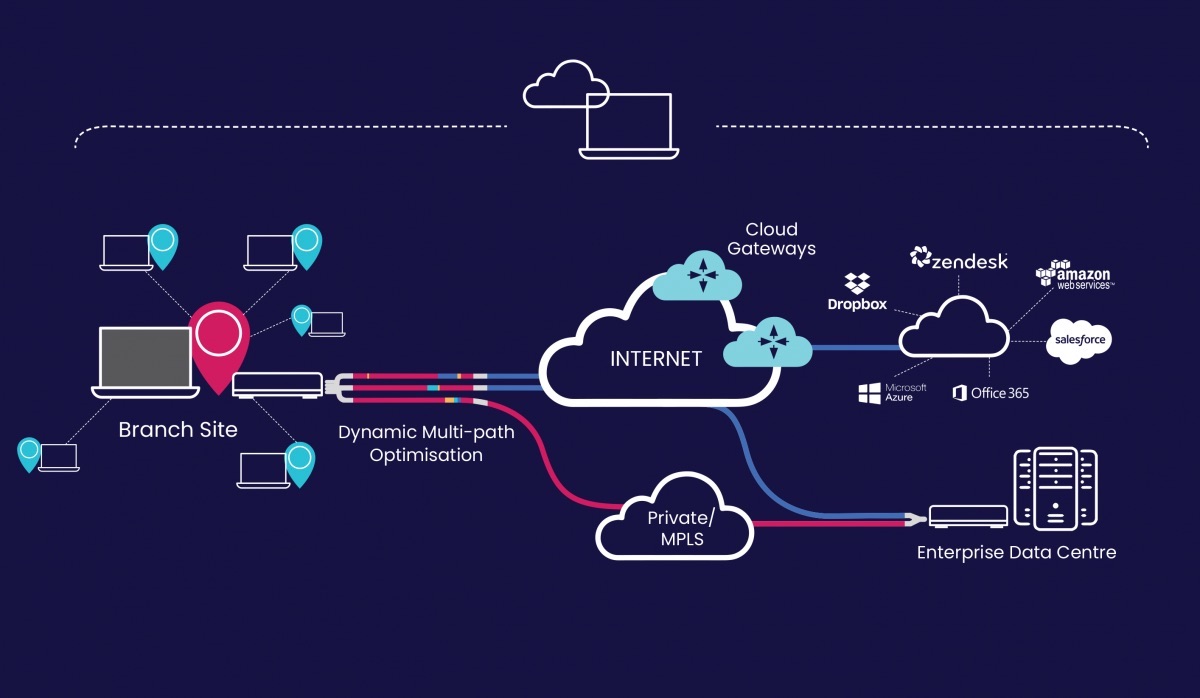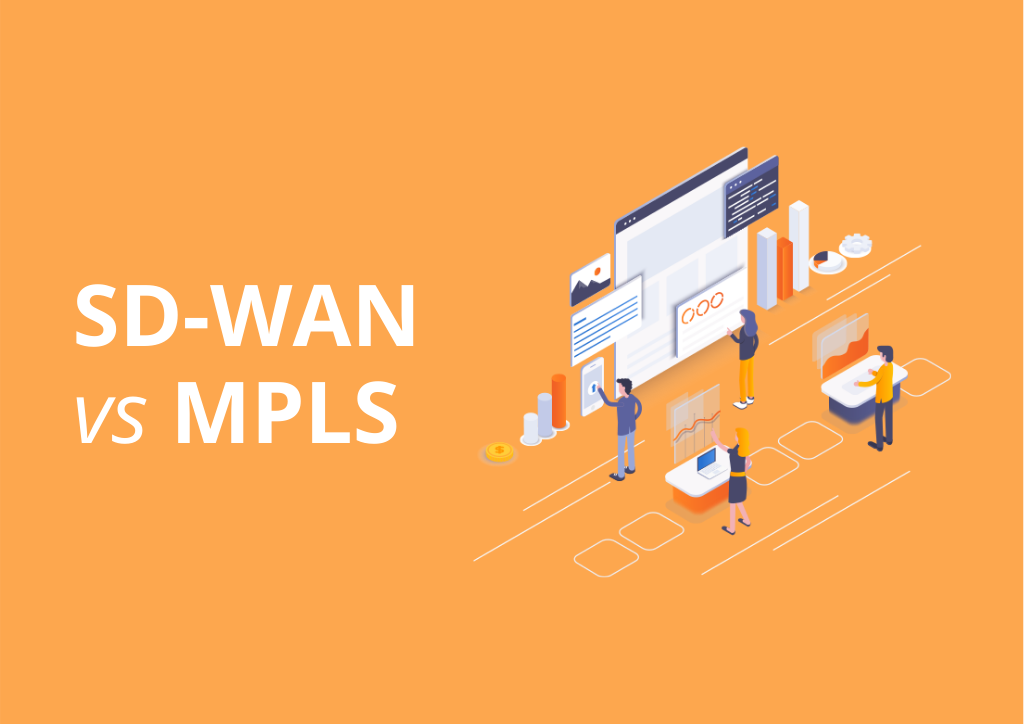Choosing the right IT network is essential for business success. When your operations are reliant on your tech setup, it’s vital to have the best infrastructure, components and technology at your fingertips.
However, selecting the optimal network for your business can be tricky. With so many options out there, it can be hard to know which is the most cost-effective, secure and efficient solution for your enterprise.
Two of the most popular options for today’s businesses are SD-WAN and MPLS networks. To discover whether your business can benefit from either of these solutions, take a look at what they are and how they differ.
What is SD-WAN?
A Software-defined Wide Area Network (SD-WAN) is a virtual WAN architecture that allows companies to leverage any combination of transport services –such as MPLS, 4G, 5G and the nbn – to securely connect users to applications and the internet.
SD-WAN uses a centralised control system to securely and intelligently direct traffic across the WAN depending on the policies set by the business.
result is increased application performance and a high-quality user experience, which in turn can increase business productivity and agility while simultaneously reducing IT costs.
The software-centric approach of SD-WAN can also reduce your company’s reliance on hardware, like data centres, giving you the option to use cloud-based services instead.
What is an MPLS Network?
Multiprotocol label switching, or MPLS, is a routing technique that’s used on WAN networks. Instead of sending data to a long network address, MPLS sends data from one node to another via short path labels.
This simplifies the process of transferring data and minimises the time it takes for data to be sent and received. Furthermore, the use of short path labels reduces the risk of errors and undelivered data.

What’s the Difference Between SD-WAN and MPLS?
Before you can determine whether an SD-WAN or MPLS is right for your business, it’s important to understand the differences between the two types of technology, such as:
Technology
When it comes to your network, MPLS is part of the connectivity component, whereas SD-WAN manages the traffic. It’s not practical to compare SD-WAN vs. MPLS one-to-one as they are complementary technologies: that is, one is not a replacement for the other.
While SD-WAN solutions can certainly reduce the reliance on MPLS networks, it won’t replace them outright. SD-WAN lets you use less expensive connections (such as nbn and broadband) for some business applications, however, you’re not going to abandon all of your MPLS connections once you switch to SD-WAN.
Instead, SD-WAN works on top of your MPLS and broadband connections to improve performance and control costs. Also, without a robust connection to work with, SD-WAN will struggle to provide the performance you need to run critical business applications.
Cost
When using MPLS networks, every piece of data is transported back to a central hub before being re-routed to its intended destination. While being necessary, it can be inefficient and this increases costs.
With an SD-WAN overlay, however, a private data traffic exchange ensures that data can be sent directly to its intended location via the most efficient path possible.
This increased flexibility and speed is ideal in business environments, but it also offers increased efficiency and, therefore, lower overall costs.
Ideally, the implementation of SD-WAN will allow the use of lower-cost bandwidth to prioritise standard application traffic and keep the more expensive MPLS traffic for critical applications.
Security
Cybersecurity is a major issue for today’s businesses. With increasing amounts of data protection legislation being passed, companies can face serious sanctions for data breaches, not to mention harm to their reputations.
As MPLS negates the need to use the public internet and keeps data on a private network, it has been seen as the most secure option for businesses.
However, a drawback of MPLS in terms of security is that there is no built-in measure to detect malware or viruses. Instead, this is added to the network as a secondary factor.
While the same can be true for SD-WAN networks, it doesn’t have to be. For SD-WAN to be a viable entity for businesses it must offer adequate levels of security and, fortunately, it does.
Depending on the SD-WAN solutions you choose for your business, you can select a network that has been created to deliver the highest level of security for your firm.
When SD-WAN networks are created with security as a priority, they can deliver far higher levels of in-built data safety than existing MPLS networks.
Bandwidth
One of the main advantages of having an MPLS network is the high level of service it offers. When businesses are dependent on connectivity to operate, the end-to-end QoS associated with MPLS is hard to beat. But it comes at a price.
In order to maintain this high quality of service, MPLS networks need to cater for ‘worst-case scenarios’ in terms of the potential bandwidth that’s needed.
This means that companies are routinely paying for bandwidth they simply don’t need or potentially will never use.
While some MPLS networks attempt to adjust bandwidth, its inability to differentiate between applications makes this largely ineffective.
With an SD-WAN overlay, however, it’s possible to identify the applications in use and adjust the bandwidth accordingly.
By using granular loading balancing to manage multiple connections, even latency-sensitive applications can perform seamlessly on an SD-WAN network.
Ultimately, this flexibility allows businesses to retain the level of end-to-end QoS associated with MPLS, without the high costs associated with having excess bandwidth on standby.
Is SD-WAN Right for Your Business?
As you can see, finding the right network for your business isn’t a matter of SD-WAN vs MPLS.
It’s a matter of, can your MPLS network be enhanced by SD-WAN? With enhanced security, increased flexibility and lower costs, the answer for most companies will be a resounding yes!
To learn more about SD-WAN and MPLS technology or to talk about SD-WAN solutions in more detail, talk to Data Express now on 1300 801 110.




